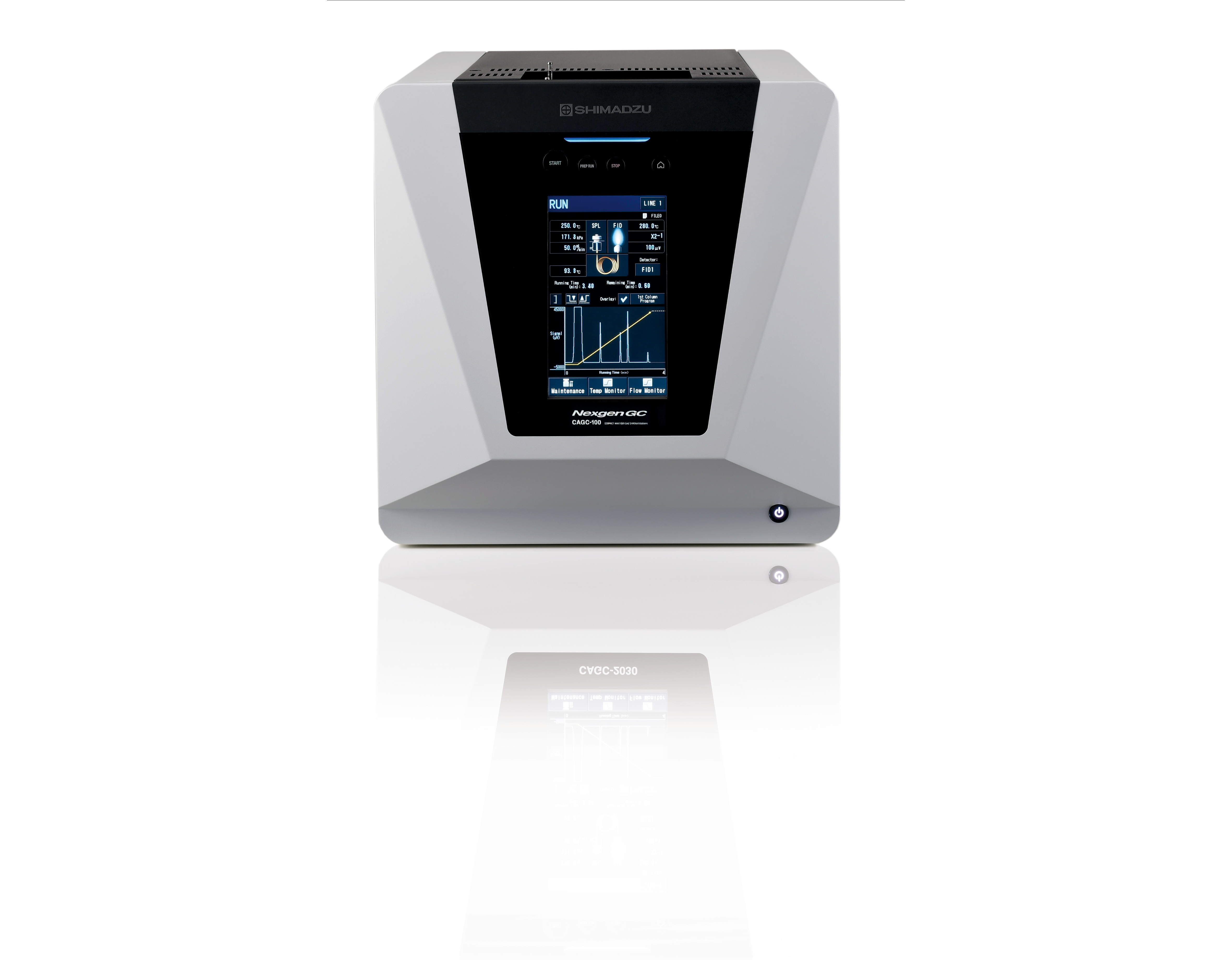1/3 less large and twice as fast
New Nexgen GC CAGC-100 – Compared with conventional technology, more than 30 % smaller and up to 50 % less analysis time / compact Analyzer Gas Chromatograph “Nexgen GC” / Plate column and multi-deans switch proprietary technologies
Celebrating this year the 50th anniversary of its presence in Europe, Shimadzu emphasizes its Excellence in Science approach through the release of the new next-generation “Nexgen GC” multidimensional gas chromatograph. The Nexgen GC highlights the company’s position of a world leader in analytical instrumentation. It achieves miniaturization and high-speed analysis by the proprietary “plate column” technology and multi-deans switch (patented technology). It is a next generation GC making it easy to use multidimensional analysis suitable for complex components by installing two gas chromatographs in a small body.
 1/3 less large and twice as fast: The “Nexgen GC” Compact Analyzer Gas Chromatograph improves analytical productivity through high speed while saving space
1/3 less large and twice as fast: The “Nexgen GC” Compact Analyzer Gas Chromatograph improves analytical productivity through high speed while saving space
Improved analytical productivity
The conventional multidimensional gas chromatograph (MDGC) uses two ovens equipped with capillary columns, therefore the system becomes large and difficult to install. Analysis also takes time, so there may be issues in terms of suitability for processing in areas such as quality control. The Nexgen GC was developed to solve these problems. It requires of about 1/3 less laboratory space compared to conventional models, and can raise the chromatographic speed faster than before, so it is possible to halve the analysis time [1]. Furthermore, it improves analytical productivity through high speed and space saving.
The Nexgen GC is equipped with new and advanced product features such as:
1. Built-in two plate columns in a compact body
The newly developed plate column is a compact, high performance GC column which forms a fine flow path by photo etching [2] on a 100 mm x 100 mm plate. This product is an MDGC configuration with two column cartridges built in a compact body.
2. High-speed and high separation analysis possible
Since the column is heated directly by the flat plate heater arranged inside the cartridge, it can raise the temperature by 70 °C per minute from the low temperature range (near room temperature) to the high temperature range (350 °C), which was not possible with the conventional oven type GC [3[. Since each of the two cartridges can be heated quickly, high-speed and high separation analysis is possible. In addition, analysis time can be shortened by “backflush function” which drives out not quantified high boiling point compounds remaining after elution of the target component.
3. Heart cut with high repeatability
In the Shimadzu “heart cut analysis” [4] which introduces only the target component in the sample for improved separation to a second column, the company’s proprietary “multi-deans switch” has been adopted. Hardly any pressure change occurs at the first dimension column outlet, variation of retention time is suppressed and high repeatability is achieved that can perform heart cut more than once.
4. High operability
A full color liquid crystal touch panel enables easy operation. Various functions such as self-diagnosis, automatic leak check of carrier gas, display of chromatogram etc. are possible with the GC body. An advanced user interface can analyse the state of the device at a glance and display the parameter setting screen with one click in the user-friendly “LabSolutions” software. Remote monitoring of the device is also possible using a smartphone or tablet PC.
[1] Analysis time that can be abbreviated depending on the subject of analysis
[2] Precision processing technology for forming of a corrosion-resistant film on a glass or metal plate with a necessary pattern using photolithography technology
[3] The conventional product can raise the temperature range from 250 to 350 °C at 45 °C / min, Nexis GC-2030. 230V models
[4] Technology to introduce components that cannot be separated by one column into the second column by switching the switching mechanism